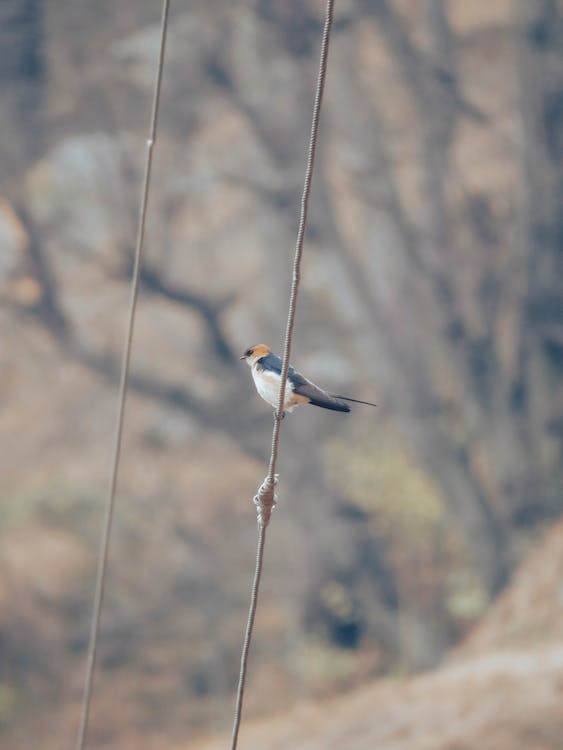It is a large swallow with brick-red underparts and rump and dark blue upperparts. This bird is distinguishable from its cousins through the metallic-blue marks on the side of its heads, covering its eyes and ears. It is a tenacious flyer, swooping and changing its course frequently over open habitats, such as grasslands, wetland edges, and sparse woodlands.
Read further to know more about the Red-breasted Swallow.
What is a Red-breasted Swallow?
Red-breasted Swallow (Cecropis semirufa) or the rufous-chested swallow is a bird coming from the Hirundinidae family, composing swallows, saw-wings, and martins. It is an intra-continental migrant bird, occurring in much of Africa south of the Sahara.
Its seven levels of classification are as follows:
Kingdom: Animalia
Phylum: Chordata
Class: Aves
Order: Passeriformes
Family: Hirundinidae
Genus: Cecropis
Species: C. semirufa
Red-breasted Swallow Physical Description
Red-breasted swallows resemble the Mosque Swallow but are relatively smaller. Both species sport a dark blue crown and mantle, accentuated by reddish-brown underparts parts and rump. However, red-breasted swallows tend to have longer outer edge tails feathers. Moreover, the dark blue crown stretches down below the eye, and the white underwing is absent.
Generally, swallows have short bills, compensated by strong jaws and a large gape. They usually grow from 3.9 to 9.4 inches or 10 to 24 centimeters and weigh about 10 to 60 grams. Their wings are long and pointed. Meanwhile, legs are short and have evolved for perching or holding onto branches rather than walking, with three toes directed forward and one toe directed backward.
Where can they be spotted?
Red-breasted Swallows are spread throughout its range in sub-Saharan Africa. It thrives in dry open areas, such as grasslands, wetland edges, and sparse woodlands. They can be found starting from the Eastern Cape to Namibia, Angola, Mozambique, Senegal, Uganda, Kenya, to Tanzania. These birds are intra-African migrants, nesting during the summer in southern Africa, but become a breeding visitor during the wet season across its northern range.
Interesting Facts You Should Know About the Red-breasted Swallow
Red-breasted Swallows primarily feed on arthropods, such as small beetles, flies, and termites alates. These birds usually forage and hawk prey from the air, but will occasionally snap food items on the ground or off the branches.
These birds are monogamous, forming strong bonds with their partners. They are solitary nesters and will construct closed mud nest lined with sheep’s wool, hair, feathers, and grass. Nests are usually built with a tubular entrance under a bridge, deserted building, or cavities, such as tree holes, caves, burrows, or earthen brank holes. Both sexes usually complete the nest construction in about 13 to 35 days.
The egg-laying season usually starts from August to April, peaking from November to December. A red-breasted swallow female will often lay a clutch of 1 to 6 egg, mostly three, which she will solely incubate approximately 18 to 23 days. The broods will be fed by both sexes and leave the next about 23 to 25 days. The juveniles will still go back to their home nest to rest for up to two weeks after fledging.
Red-breasted Swallows population size is not threatened and has benefited from the construction of infrastructures, and road culverts, which serve as new nesting sites. The bird species is classified as Least Concern (LC) under the IUCN Red List.
WILDLIFE PARKS AND RESERVES WHERE THIS SPECIES IS FOUND:
ZIMBABWE
ZAMBIA
NAMIBIA
BOTSWANA
SOUTH AFRICA
BOTSWANA BIRDS | SOUTH AFRICA BIRDS
NAMIBIA BIRDS | ZAMBIA BIRDS | ZIMBABWE BIRDS
